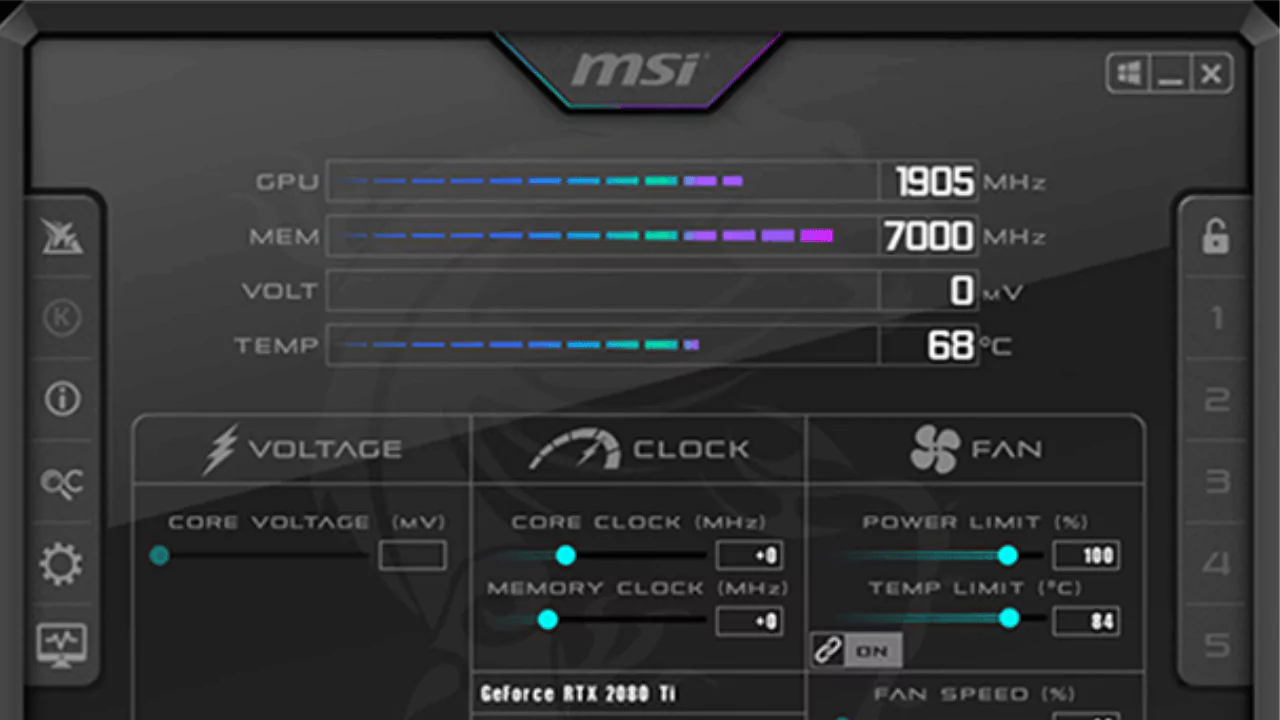Undervolting your GPU is a method to decrease its voltage, reducing power consumption and heat output without sacrificing performance. It’s a technique commonly used by enthusiasts to optimize their system’s thermals and noise levels. In this comprehensive guide, we’ll delve into the intricacies of undervolting both Nvidia and AMD graphics cards.
Before You Begin: Preparing for Undervolting
Before diving into undervolting, ensure you have the necessary tools:
- MSI Afterburner: Download and install MSI Afterburner, a popular tool for GPU tweaking.
- HWiNFO: Install HWiNFO for monitoring voltage, temperatures, and other crucial metrics.
- 3DMark Basic Edition: Use 3DMark for stress-testing your GPU and ensuring stability.
How To Undervolt GPU? (Step-by-Step Guide)
Undervolting your GPU can be a beneficial process to reduce temperatures and potentially noise levels while maintaining performance. Here’s a step-by-step guide based on the content you provided:
Prepare Your System:
- Ensure that your graphics card is correctly installed in your PC.
- Download and install the necessary programs: MSI Afterburner for undervolting, HWiNFO for monitoring, and 3DMark Basic Edition for stress-testing.
Get Current Voltage Settings:
- Launch HWiNFO in Sensors-only mode and start it.
- Run the Time Spy benchmark in 3DMark.
- In HWiNFO, note down the values under “Maximum” for GPU Core Voltage and GPU Clock. These are your current voltage settings.
Open the Curve Editor in MSI Afterburner:
- Launch MSI Afterburner and access the “Curve Editor” option.
- Identify the point in the voltage/frequency curve closest to your stock settings.
Adjust GPU Voltage:
- Lower the voltage incrementally, around 10-20 mV.
- Ensure the GPU runs at the stock core clock but at a lower voltage.
- Apply the settings in MSI Afterburner and save the profile.
Benchmark and Adjust Undervoltage:
- Run a 30-minute stress test using 3DMark Time Spy.
- If stable, continue to lower the voltage incrementally, testing stability each time.
- Note the last stable setting before experiencing instability.
Finalize Undervolt Settings:
- Once stability issues arise, revert to the last stable setting.
- Settle on a final undervolt setting, balancing performance and stability.
- Save the final profile in MSI Afterburner.
Check Temperature After Undervolting:
- Monitor temperature changes after undervolting.
- Observe any reduction in GPU temperatures and potential noise levels.
- Enjoy the benefits of undervolting with improved efficiency.
Remember to proceed with caution and monitor your system’s stability throughout the undervolting process. It’s also recommended to save your original settings before making any adjustments for easy restoration if needed.
Is it Safe to Undervolt GPU?
Yes, it is generally safe to undervolt your GPU. The process involves reducing the voltage supplied to the GPU, aiming to maintain performance while reducing power draw and heat. If done correctly, this can lead to lower operating temperatures and potentially prolong the life of your GPU as it will be under less thermal stress over time.
Does Undervolting GPU Increase FPS?
Undervolting itself does not typically increase FPS. It can, however, maintain performance levels close to stock settings while reducing power consumption and heat. If your GPU is experiencing thermal throttling, undervolting may help maintain higher clock speeds for longer periods, which could indirectly prevent drops in FPS.
What Happens if You Undervolt GPU Too Much?
If you undervolt the GPU too much, it can lead to instability, such as graphical glitches, application crashes, or system shutdowns. These issues are usually temporary, and your GPU will abort the game or application before any damage occurs. It’s important to find the optimal balance to avoid such instability.
Does Undervolting GPU Increase Lifespan?
By reducing the heat output of the GPU, undervolting can potentially increase the lifespan of your graphics card. It also makes the card more stable during gaming or design work and can reduce fan noise, making it a useful optimization for both gamers and those concerned about power usage and heat management.







